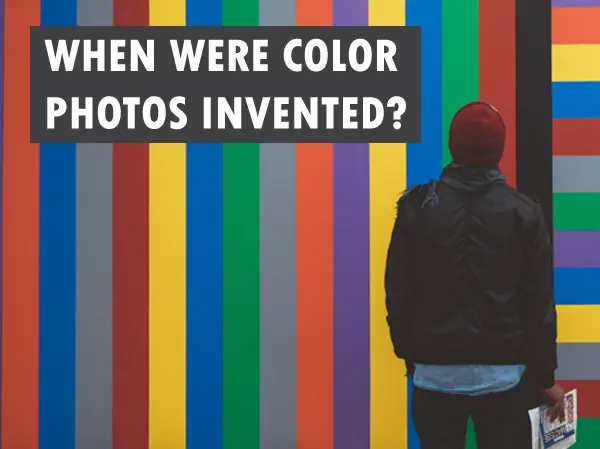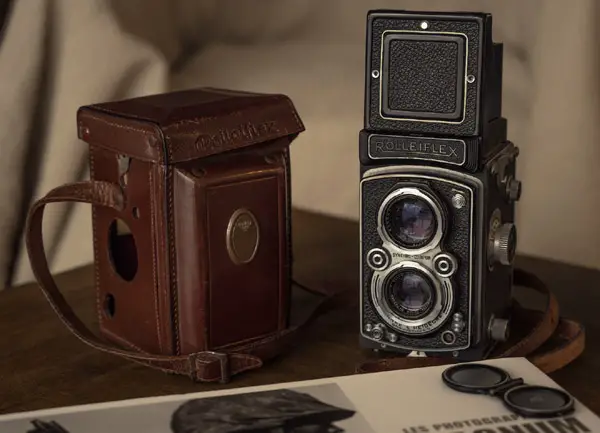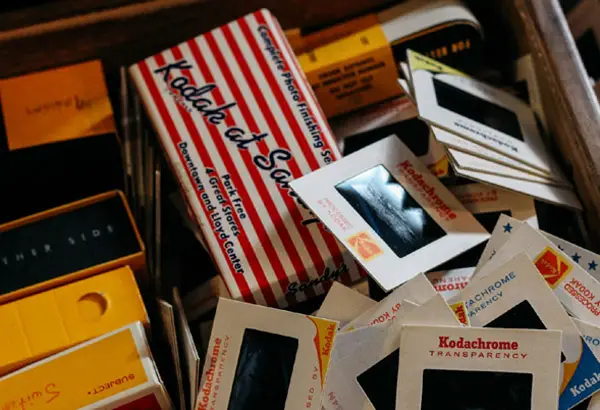When Were Color Photos Invented?
Photography has come a long way since the days of black and white photographs. Nowadays, you can snap a picture using your smartphone and effortlessly capture moments in vibrant colors. Black and white pictures from the past give off a classic, vintage vibe that some may adore, but it’s impossible to deny color’s impact on the medium of photography.

But have you ever wondered when the miracle of color photography was first introduced? In this article, we will delve into the history of color photography and learn about the invention that changed the world of photography forever.
The history of photography is filled with fascinating stories of exploration, discovery, and innovation. One of the most exciting chapters in this history is the early days of color photography. In this blog post, we will take a journey back in time to explore the early years of color photography.
A Journey Towards Color Photography
The journey towards color photography must first begin with the first photographic image ever taken. In 1826, Joseph Nicephore Niepce captured the first photographic image using a camera obscura and a pewter plate coated with bitumen.
This image ushered in a new era of photographic experimentation, leading to more advances in the world of photography. It wasn’t until 1839 when Louis Daguerre, French painter, and inventor, introduced the Daguerreotype process, that photography became accessible to the public.
The Daguerreotype process involved exposing a silver-plated copper sheet to iodine vapor to create a light-sensitive surface. The plate was then exposed to light in a camera, and the image was developed by exposing the plate to mercury vapor. This process produced a highly detailed and permanent image that was widely used for portraiture and other forms of photography in the mid-19th century.
Color photography has come a long way since its inception in the mid-19th century. From the initial experiments with color filters and sensitizers to the modern digital techniques used today, the technology has made significant strides.
When Were First Color Photos Invented?
The earliest attempts at color photography were made in the 1840s, and they were based on the three-color theory, which stated that any color could be made by mixing red, blue, and green. However, these attempts were unsuccessful, and it wasn’t until the 1860s that serious attempts were made to develop a color photographic process.
The first successful color photograph was taken in 1861 by James Clerk Maxwell. To take the photograph, he used a series of red, green, and blue filters that were used to take three separate photographs. These photographs were then projected onto a screen using lanterns, and a final color image was created by superimposing the individual images.
At first glance, it may appear unremarkable – it’s a photograph of a tartan ribbon. However, this image holds great significance in the history of color photography, representing a pivotal moment in its evolution and paving the way for the advanced techniques used in modern-day photography.
Another version of the history says that the first color photograph is credited to Thomas Sutton, who was an English physicist and an inventor of the single-lens reflex camera. He worked together with James Clerk Maxwell.
The next big step in the development of color photography came in the form of additive and subtractive color systems. Additive color systems, such as the one developed by Maxwell, use light to create colors. Subtractive color systems, on the other hand, use pigments to absorb certain colors and reflect others. The subtractive color system was later developed by Louis Ducos du Hauron in the 1870s.
Autochrome
Despite these advancements, it wasn’t until 1907 that practical color photography became a reality with the invention of the Autochrome process.

Autochrome, the revolutionary color photography process, owes its existence to the French brothers Auguste and Louis Lumière. These two clever guys not only gave us the world’s first movie camera but also stumbled upon a technique that allowed photographs to capture hues beyond the monochromatic spectrum.
This process used a layer of microscopic grains of potato starch, dyed red, green, and blue. The grains acted as filters, and when photographed, they created a full-color image that was both beautiful and realistic.
Kodachrome – 1935
Eastman Kodak released its revolutionary new color film stock in 1935, Kodachrome. Before then, photographers relied on hand-tinting black and white photographs with watercolors to add color.
What is Kodachrome?
Kodachrome was a color reversal film introduced by Eastman Kodak in 1935. It was the first commercially successful color photography system and revolutionized the way we capture images in vivid hues.
Kodachrome was made up of three emulsion layers: one layer sensitive to blue, one to green, and one to red. When exposed to light, the silver halide crystals in each layer were exposed, creating a color image. The film was then processed using a variety of chemicals and techniques to produce beautiful and accurate color photographs.

Kodachrome’s development marked the beginning of a new era in color photography, allowing photographers to capture the world in vivid hues. Though Kodachrome is no longer on the market, it was the first to open the door for other companies to develop more efficient and affordable color film.
It wasn’t until the 20th century that color photography became widely used, as early color photographs were not very stable and their colors faded over time. However, with the development of more stable color films and printing processes, color photography began to improve and become more reliable.
The invention of the three-color film helped to produce more accurate colors, and by the mid-20th century, color photography had become the norm for many photographers and their subjects. Today, we continue to enjoy and marvel at the vibrant and enduring colors captured by modern photography, all thanks to the advancements made in technology and materials.
The Impact of Color Photography on Advertising
Color photography became widely popular in the 1930s and 1940s when color film became available to the public. The Kodachrome film was introduced in 1935 and quickly became popular with photographers worldwide.
Color photography made the process of capturing images more exciting and revolutionized advertising and print media. Color films introduced accurate color reproduction of images and opened up opportunities for photographers to capture images in vivid color.
The mid-20th century witnessed a significant shift in the popularity of color photography. With the widespread adoption of color television and the emergence of color magazines, the demand for color photography increased significantly. Advertisers and publishers began to realize the potential of color photography in capturing the attention of viewers and readers.
In the world of advertising, color photography was seen as a powerful tool for promoting products and services. Advertisers understood that color images could convey emotions and mood, and therefore, were more likely to persuade people to buy their products. The use of color in advertisements also allowed for greater creativity in the design process, as advertisers could experiment with different color schemes and combinations.
The rise of color photography also had a significant impact on journalism. Newspapers and magazines began to publish more color images, allowing for a more visually engaging and compelling reading experience. Color photography could also capture the nuances of a story in a way that black-and-white photography could not. For example, color photographs could convey the vibrancy of a protest or the devastation caused by a natural disaster.
Overall, the popularity of color photography in advertising and journalism helped to establish it as a legitimate and respected art form. Color photography became a powerful means of communication, capable of evoking strong emotions and conveying complex ideas. Today, color photography is widely used in a variety of fields, including fashion, fine art, and documentary photography, and continues to captivate and inspire viewers around the world.
Color film and the mass market – 1940s and 1950s
With Kodachrome’s success, the color film became more popular and mass-produced. However, the cost was still a lot for the average consumer until the 1940s and 1950s when it became more affordable. Color photography was no longer just for the rich, and photographers now had access to capturing the world as it naturally appears.
Why did photographers not use color before 1970?
Before the invention of color photography, photographers primarily used black and white photography as the technology to capture and render images in color had not yet been developed. The color film required complex processing steps that were both expensive and time-consuming, which meant that it was not practical to use for most portrait or commercial applications.
Additionally, color photography was not made widely available until the 1970s, when Kodak introduced its Ektachrome film. Ektachrome technology was much faster than Kodachrome and it had a stable shutter speed ranging from ten seconds to an incredibly fast 1/10,000 of a second. This enabled photographers to capture vibrant colors with a much simpler and more affordable process than before.
The popularity of color photography in the 1960s and beyond
The rise of color photography continued to grow in the 1960s, thanks to advancements in technology and the rise of pop culture. Color photography became the norm in magazines and advertising as companies began using bold and vibrant images to catch people’s attention. In the art world, more and more photographers started using color to evoke emotions and tell stories.
The impact of color photography on art and advertising cannot be ignored. Companies around the world use colorful images to sell their products, and many photographers have used color to create iconic pieces of art, such as William Eggleston’s “The Red Ceiling.”
With its unique ability to capture the world more realistically and vibrantly than black and white photography, color has opened up new artistic possibilities and expanded the commercial market.
Digital color photography – the shift from analog to digital
Fast forward a few decades to the 1990s, and digital color photography emerged as a new way of capturing and manipulating colors. Unlike film cameras, digital cameras store images as computer files, giving photographers greater control over the color and tone of their images. As digital cameras evolved, they became smaller, cheaper, and capable of capturing higher-quality images.
Digital color photography has completely changed the way we take and share photos. Today, most cameras, including smartphones, have digital sensors that can capture millions of colors.
Editing software such as Adobe Lightroom allows photographers to fine-tune the colors of their pictures, resulting in more accurate and vibrant images than ever before.
Social media platforms like Instagram and Facebook have further revolutionized how we share our pictures, enabling instant access to our photos with a global audience.
Many of us still possess old black-and-white photos that we cherish and wish we could see in full color. You can order professional photo restoration and colorization services to bring your old photos back to life.
Conclusion
The evolution of color photography has transformed the way we see the world around us. From advances in film technology to the advent of digital cameras and the emergence of HDR photography, each new development has brought us closer to capturing the true beauty of the colors in our lives.
Today, color photography has become an essential part of our daily lives, from capturing memories with our smartphones to sharing our experiences with the world on social media. As technology continues to evolve, we can expect to see even more innovative ways to capture and share the colors of our world. So grab your camera, and let’s see what new colors we can capture together!
Click the following link to learn the history of photography.



